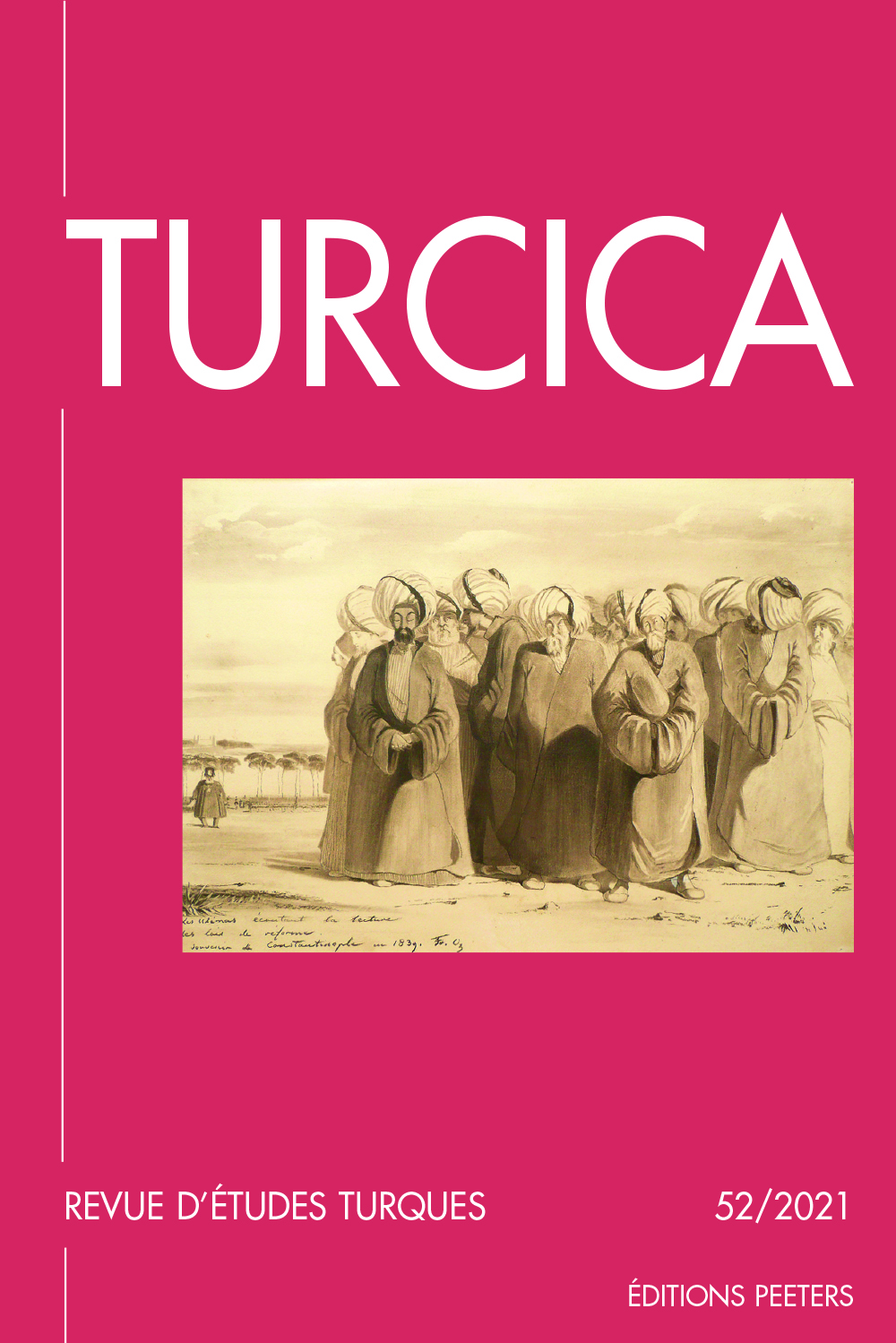 previous article in this issue previous article in this issue | next article in this issue  |

Preview first page |
Document Details : Title: Les Gagaouzes Subtitle: État des recherches et bibliographie Author(s): GANGLOFF, Sylvie Journal: Turcica Volume: 30 Date: 1998 Pages: 13-61 DOI: 10.2143/TURC.30.0.2004207 Abstract : S. GANGLOFF, Les Gagaouzes?: état des recherches et bibliographie La question de l’origine des Gagaouzes a, dans le passé, suscité de nombreux et âpres débats. Plusieurs hypothèses, à caractère plus ou moins politique, furent mises en avant (origines petchénègue ou koumane, Bulgares turquifiés, etc.) mais aucune ne semble satisfaisante au regard de l’étude de la langue de ce peuple et des connaissances historiques acquises. Les recherches de Paul Wittek, publiées dans les années 1950, semblent clore le débat en établissant l’hypothèse d’une origine seldjouke. Mais les conclusions de l’auteur sont toujours contestées, notamment par les Gagaouzes eux-mêmes. Les Gagaouzes émigrèrent massivement au début du XIXe siècle de la Dobroudja vers la Bessarabie. On les trouve donc aujourd’hui principalement en Moldavie et dans le sud de la Bessarabie ukrainienne. Quelques communautés subsistent en Bulgarie et en Roumanie et des petits groupes de Gagaouzes ont émigré, à diverses époques et pour divers motifs, en Grèce, en Turquie et en Asie centrale. Ces communautés gagaouzes ont connu des phénomènes d’identification divers selon les contextes politiques et sociaux. La bulgarisation des Gagaouzes restés en Bulgarie est ainsi notée dès la fin du XIXe siècle alors qu’une partie des Gagaouzes restait, elle, attachée au patriarcat de Constantinople. Les Gagaouzes de Bessarabie ont, eux, subi un processus de russification durant la période communiste. Ils revendiquent toutefois leur «turcité» tout en soutenant être un «peuple à part». S. GANGLOFF, The Gagauz: Research and bibliography The origin of the Gagauz has been sharply debated in the past. Numerous hypotheses, more or less politically motivated, have been put forward (Petcheneg or Kuman origins, Turkicised Bulgarians, etc.) but none seems satisfactory in light of the study of the language of this people or of historical knowledge. The research undertaken by Paul Wittek, published in the 1950’s, seems to have settled the controversy in favour of a Seljuk origin for the Gagauz. However, his conclusions are still contested, notably by the Gagauz themselves. In the beginning of the nineteenth Century, the Gagauz emigrated en masse from the Dobroudja to Bessarabia. They therefore currently inhabit Moldova and the south of Bessarabia, which belongs to the Ukraine. A small number are to be found in the Balkans (Bulgaria, Romania, Greece, Turkish Thrace) and in Central Asia. The self-identification of Gagauz communities has undergone different trends depending on the political and social context. For example, the Bulgarisation of the Gagauz who remained in the Dobroudja is acknowledged since the end of the nineteenthcentury, whereas another faction of the Gagauz remained faithful to the Patriarchate of Constantinople. In Bessarabia, although the Gagauz were intensively Russified during the Communist era, they nevertheless assert their «Turkishness» but insist on being a «people apart». |
 |


